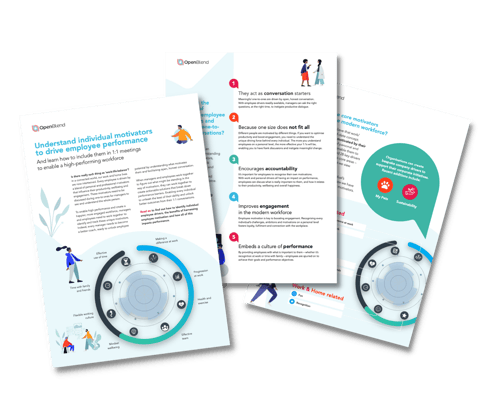As of March 8th, 2021, primary and secondary school pupils in England and Wales returned to the classroom – cue a massive sigh of relief from all those hard-working parents who have been home-schooling their children over the past year. And though, of course, the COVID-19 pandemic continues to impact various aspects of our everyday lives, the Prime Minister announced further steps to take us out of lockdown last month...
How did this affect the Top 10 Blend Elements for OpenBlend users in February 2021?
Well, the Top 5 have remained the same since January 2021 (although Money and Making a Difference at Work did swap places, from 3rd to 4th, and vice versa), but notably, there were two brand-new entries last month: Fun and Mindset Wellbeing. If you ask us, this probably reflects the fact that restrictions are slowly being lifted, and the sun (equally as slowly, it has to be said) is starting to show its face again.
Studies suggest that remote work is here to stay, it is predicted that companies worldwide will adopt a hybrid approach to employment practices in the future. At OpenBlend, we believe that making a success of this requires a companywide shift to a people-centric approach to performance management.
How to optimise employee productivity and performance and improve employee engagement using OpenBlend
In our 2020 Wrapped blog, we discussed the importance of promoting a good work-life Blend: the key to driving business performance and employee engagement. But if you really want to optimise employee productivity, it is not enough to simply understand or acknowledge Blend drivers – while this is a great starting point – to become truly people centric, you need to explore and work with your managers and employees to close the Blend gaps that you find.
How to monitor Blend gaps to become people-centric
When a user tracks their Blend elements using OpenBlend, they log their target and actual scores for fulfilment. Take ‘health and exercise’ as an easy example, if this is an important element to one of your employees and their target score is a 9, yet their actual score is a 7, there is a gap to address in order to optimise productivity. These Blend gaps highlight areas that need focus as creating an environment that prioritises fulfilment of work/life drivers has a big impact upon building a high-performance work culture and helps businesses to become people-centric.
Regular 1:1s (one-to-ones) allow managers and employees to monitor these gaps and provide an invaluable forum for discussion about how scores can be maximised, helping you to devise tailored people strategies that work on closing the gaps between actual and target scores and place each employee at the heart of the performance process. Using employee data generated by OpenBlend analytics, Data on Demand, you’ll also be able to spot trends across your workforce that highlight the areas across the business to focus attention. Such as:
- Clarity of goals and direction
- Your health and wellbeing agenda
To make sure you are getting the best out of your employees and put your people first you need to enable your managers to have effective conversations that focus on the key drivers that impact an individual’s productivity and then tailor their approach to individuals, rather than operating a cookie-cutter set of expectations and management methods.
What Blend gaps mean for the future of work
During the pandemic, the two lowest Blend gaps (between users’ target and actual scores) have been for the following key drivers:
- Flexible Working Culture - 13%
- Supportive Leader - 14%
The average ‘actual’ score for Flexible Working Culture currently stands at 76%. Interestingly, in 2016, it stood at 67%, which just goes to show how well OpenBlend employers have responded to the challenges of the past year. The target score has also risen to a high of 89%, which further proves how important it is to today’s workforce that businesses offer a flexible working culture. The target score for Supportive Leadership is even higher at 90%, and again, figures show that managers who use OpenBlend are well on their way to meeting that goal. With the average ‘actual’ score sitting at 76%, sit down with your teams and ask them, what more can I do to support you during these times?
As we move out of lockdown it appears Blend drivers are changing. Fun and Mindset Wellbeing have entered the Top 10 for the first time in months and months, so how will you support employees to reduce the gap between current stats and target scores in these Blend elements? With the demands of the past 12 months having taken a big toll on employee wellbeing and all in all zapping a lot of ‘fun’ out of life in general, it’s never been more important to talk to your employees and build a culture of connection through regular one-to-ones. And once employees start telling you what they need to feel fulfilled with regards to certain elements of their Blend, your managers must then feel empowered to act on it...
OpenBlend drives work productivity and fulfillment by recognising the individual as the heart of the organisation. Our performance management tool provides you with a structure for effective performance management conversations, regular one-to-ones, and feedback. Allowing you to evaluate current productivity, performance, and wellbeing across your workforce and devise meaningful people strategies that will help you get the best out of each and every individual. Remember, one size doesn’t fit all when it comes to driving productivity and performance.
If you want to see how OpenBlend’s approach to people-centric performance management can benefit your business, book a demo with us today. Or, for more information, contact us on 01628 613040 or email hello@openblend.com.
